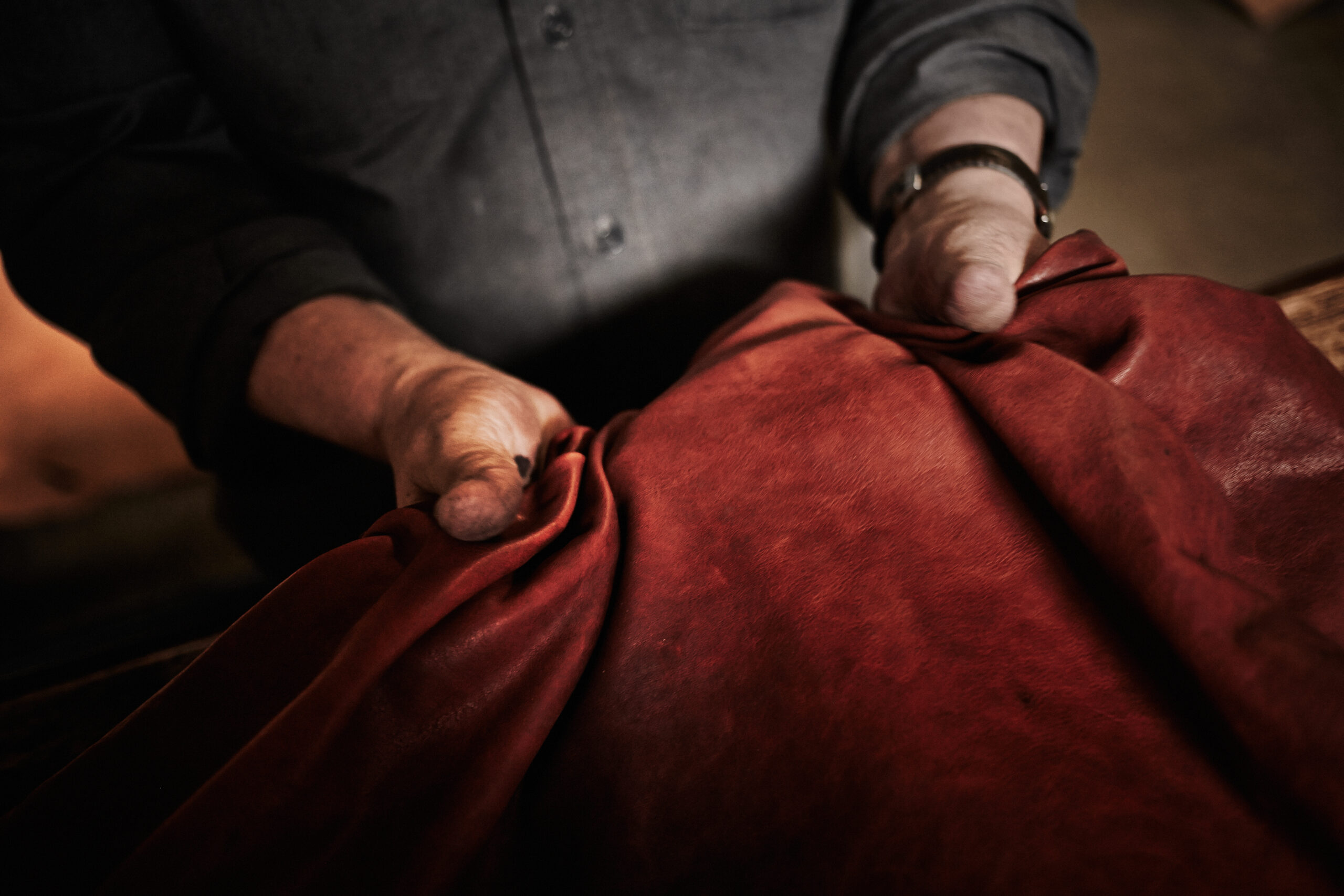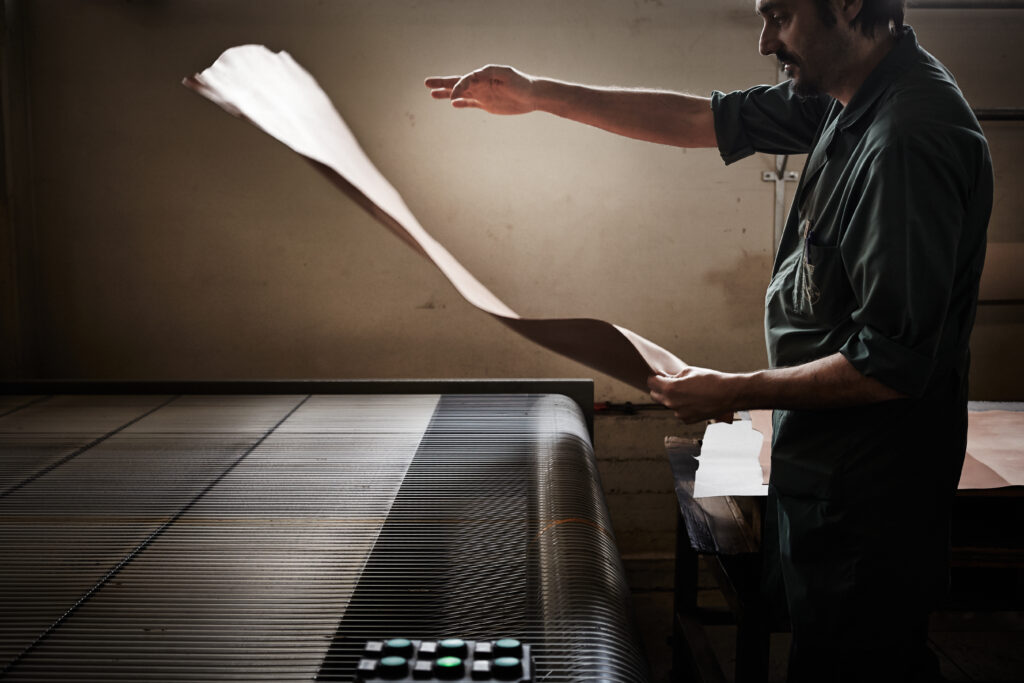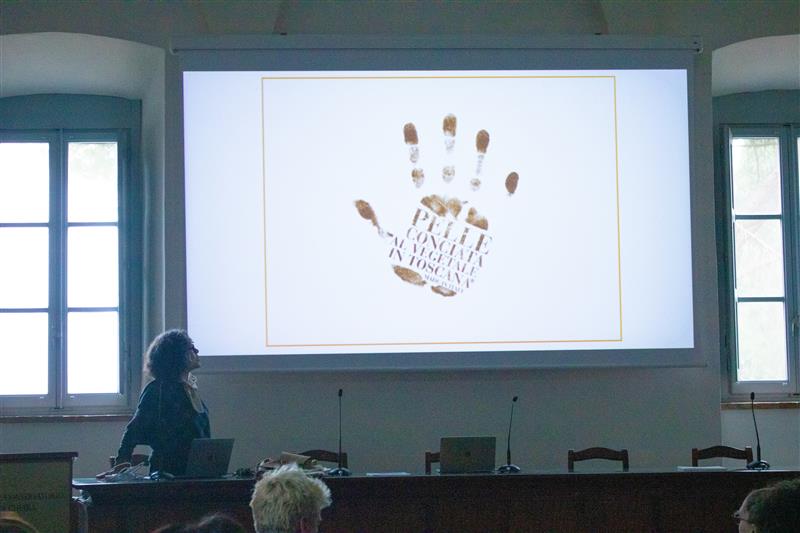12 February 2025
Vegetable Tanning: A Great Artisan Tradition

Of all leather processing methods, vegetable tanning is the oldest.
It is believed to date back to Prehistory, when humans learned to transform the hides of animals killed during hunting in garments and utensils.
Vegetable tanning has evolved over the centuries, through the selection of the most suitable plants to extract the tannin and the efficiency improvements of the production methods.
However, the fundamental phases have remained unchanged until today, passed down between generations as a precious artisan tradition. In particular, vegetable tanning is used to produce hard leather that, thanks to its resistance, can be used for leather soles and in some furnishing components.
This workmanship is due to the ability of the master tanners make the vegetable tanned leather a unique product, which ages but does not decay. In addition, the tannin present in vegetable tanned leather can play an important role in the fight against bacteria.
Vegetable tanning is a real art that passed down from generation to generation.

The best tanners jealously guard their secrets. Each one conceals an old special recipe combined with state-of-the-art technology. The type of tannin used, the doses, the tanning times and the processing methods make the difference. Of all the tannin applications, this is certainly the one with the oldest tradition.
All with the care and dedication that requires a natural process, with slow production times. The process has remained practically unchanged over the centuries, except for few concessions to modernity introduced in recent times.
Italian Vegetable Tanned Leather Consortium

The Italian Vegetable Tanned Leather Consortium was founded in 1994 by a small group of traditional Tuscan tanners. Today the consortium includes 19 tanneries, all operating in Tuscany, in the area between Pisa and Florence, and sharing the same standards of production.
The mission of this non-profit organization is to promote vegetable-tanned leather; to safeguard a typical Tuscan product; to guarantee the quality of raw materials and processes used in its production and to highlight traditional techniques whose origins lie deep in Tuscan history.
Yet the consortium also looks to the future: sponsoring research; organizing events and seminars; and holding workshops for young designers, makers and producers.
Since 2012, on an annual basis, talented students from fashion and design schools from around the world are given the opportunity to participate in “Craft the Leather”, a one-of-a-kind educational project that includes a first-hand immersive experience in the Tuscan Leather District, a material-driven creative phase and a final international design competition.
The consortium acts as guarantor and ambassador of Tuscan excellence throughout the world. It has consolidated this position with the creation of a trademark guaranteeing the quality, origin and traceability of leathers produced by its member tanneries.

Presented as an elegantly scripted certificate of warranty, the Pelle Conciata al Vegetale in Toscana label is the property of the consortium and can only be used by its member tanneries that respect the Rules of Production and Technical Standards established by the consortium or, under license, by manufacturers who use leather produced by consortium members.
LED Project: Discovery the beauty of vegetable-tanned leather at APLF
LED Project, an initiative of APLF Leather, teams up with the Italian Vegetable Tanned Leather Consortium to organise its third season, featuring a display project titled “The Beauty of Vegetable-Tanned Leather” on 12-14 March 2025 at the Halls 3FG, Hong Kong Convention and Exhibition Centre, and a sharing session at 16:00 on 12 March 2025 at the Main Stage.
The sharing will invite the Consortium to share the use of vegetable-tanned leather, and six designers from China, Vietnam, Japan, and Pakistan to launch their exclusive APLF edition handbags, utilizing vegetable-tanned leather from Tuscany.








We bring leather, material and fashion businesses together: an opportunity to meet and greet face to face. We bring them from all parts of the world so that they can find fresh partners, discover new customers or suppliers and keep ahead of industry developments.
We organise a number of trade exhibitions which focus on fashion and lifestyle: sectors that are constantly in flux, so visitors and exhibitors alike need to be constantly aware both of the changes around them and those forecast for coming seasons.